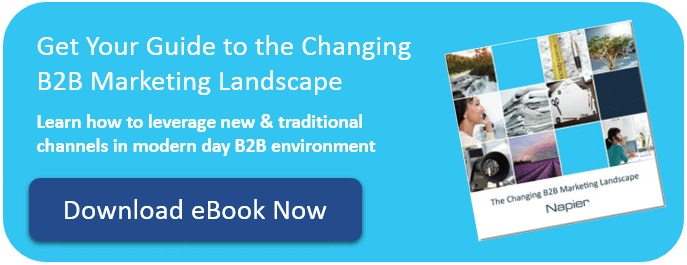The modern day buyer has far more control over their purchase journey than the vendor has over the selling cycle, a shift in dynamics that has changed the B2B buyers’ journey.
The fact is, buyers can be as much as 90% of the way through their purchase journey before they engage with sales, and while this is a challenge for marketers, it also provides an opportunity. Marketers have never had so much customer data available to them, and this insight, coupled with the significant shift towards inbound marketing, opens doors to understanding of our customers and mapping a strategy that allows us to swiftly guide these prospects through their B2B buyers’ journey.
Yes, as marketers we no longer hold all the cards, and yes, we must develop enough relevant, high-quality content to rise above the noise, but when this is done effectively we can significantly increase our chances of being shortlisted as a vendor.
With that in mind, here are three tips for managing the changing B2B buyers journey.
Reach buyers earlier in their journey
Unfortunately, you can no longer wait for a potential buyer to contact you, instead you have to make yourself visible. This means producing highly relevant content designed for the awareness stage in the buyers’ decision making process. The B2B buyers’ research process typically begins with search, and therefore search is a critical part of your marketing strategy. Be specific, be relevant and be knowledgeable about the key words your buyers are searching for, and use this insight to drive your SEO strategy.
While search is crucial, there are still a whole other range of channels and tactics that can be leveraged to reach your audience in the early stages of their research. Firstly, search isn’t limited to Google, and you should be considering platforms such as YouTube and SlideShare to engage your prospects. SlideShare is growing as a platform, and has become an important resource for information-gathering, particularly in many verticals. In addition, LinkedIn, Twitter and even, for some B2B brands, Facebook, are all really important for raising brand and product awareness and driving engagement among existing and potential customers, as are blogging, guest blogging, content development and third-party endorsement.
Let your content aid their research
Investing in quality content development shouldn’t be an option, it should drive your entire marketing strategy. The B2B buyers’ journey has changed, and subsequently so have the dynamics of marketing. Regardless of the channels you invest in, and the awareness stages, your content should be developed around providing solutions to their pain points.
This requires understanding their challenges; consider speaking with the sales team to generate insights about target audiences, and where relevant looking at FAQs and ‘listening’ on social media.
To increase your chances of becoming shortlisted, it’s important to be understand what information B2B buyers find valuable. It’s crucial that you are not only able to emphasise the impact of your solution of their business, but also begin to convince them that your solution is worth their consideration in 3-7 seconds. It’s also important to develop content in various formats and lengths, in order to accommodate different content preferences and time constraints.
Optimise your website content
Enhancing user experience should be a key consideration in both the design of your website and the content available on your website, and it has never been more important to the changing B2B buyers journey than it is today. It is in fact this content, coupled with an effective marketing automation strategy, that successfully guides your buyers through their decision making process.
There are, however, several things to consider when it comes to optimising your website content for B2B buyers. Regardless of how a prospect arrives on your website, the fact is they are there, so don’t lose them on the first page. One of the biggest reasons that buyers leave a potential vendor’s website is simply a lack of clear messaging: in other words they don’t quite know what the company does. Make sure you’re clear, concise, engaging and informative in your short-form messaging. Additionally, avoid overwhelming your audience with too much information, instead layer your content in a way that enables users to drill down to more specific information as and when needed.
For more insight into the changing B2B buyers’ journey, and how to address this shift in buyer behaviour, download our guide to the Changing B2B Marketing Landscape.

